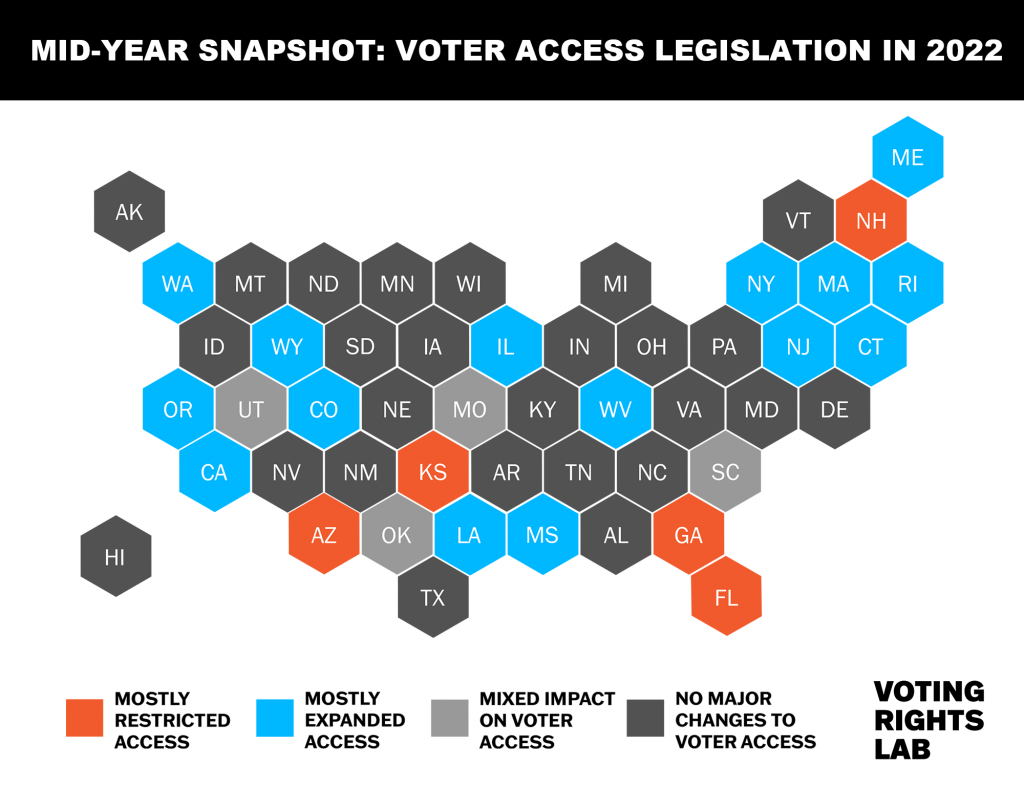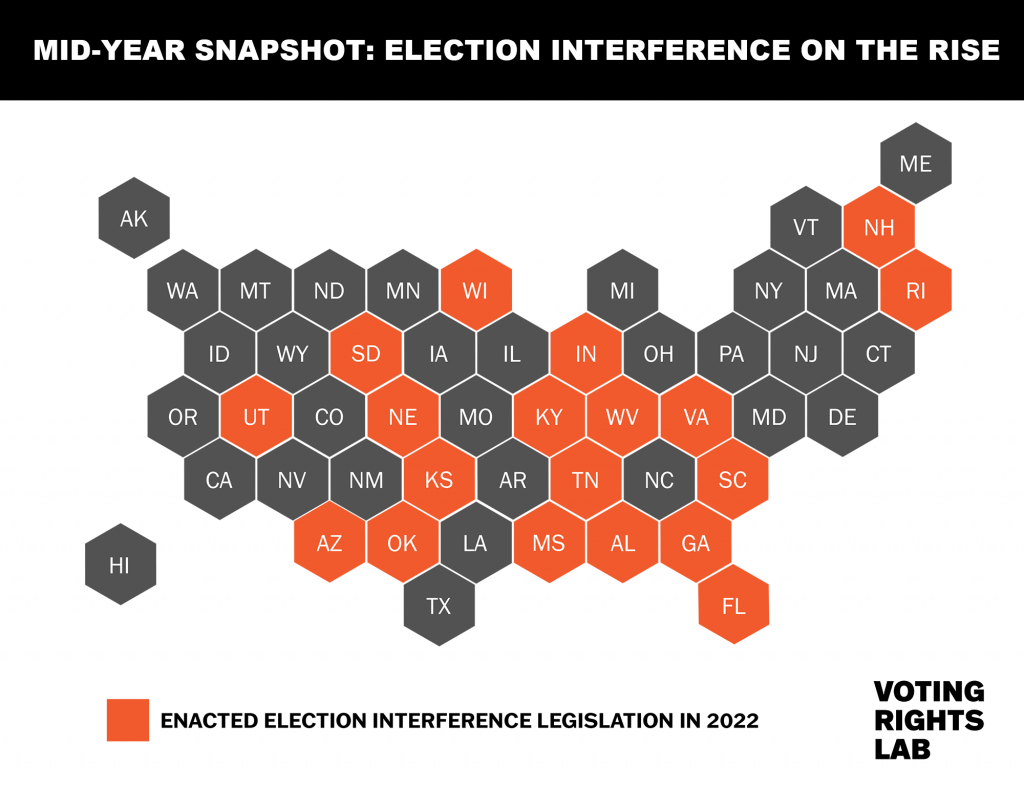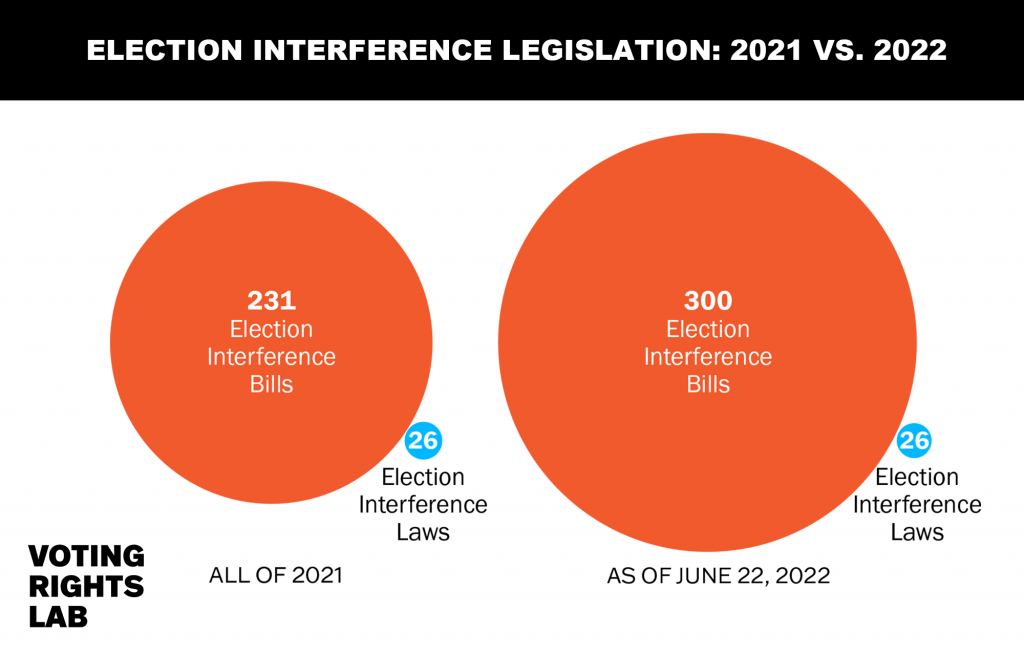In recent years, we’ve witnessed an onslaught of election-related legislation pulling the nation in two directions. On the one hand, many states have taken steps to erode participation in our democracy, creating hurdles to casting a ballot and interfering with fair and transparent election administration. Meanwhile, other states have made tremendous progress in expanding participation in our democracy, giving voters more options to make their voices heard and strengthening our election infrastructure.
2022 is no different. States remain divided on issues like mail voting, with many states limiting what was a widely popular vote method during the global pandemic. Conversely, when it comes to policies like early voting and rights restoration for those with past convictions, we’ve seen extraordinary strides made to improve voter access.
The Voting Rights Lab’s latest report – “The State of State Election Law: 2022 Mid-Year Review” – assesses the current landscape of state election laws and changes to voter access across all 50 states, revealing an expected election-year dip in voting access bills, but an alarming increase in bills that interfere with election administration.
We also review how recently enacted election legislation and new laws restricting voter access could impact election administrators and voters in the 2022 midterms and November elections. This analysis comes after mail ballot rejections rose dramatically in Texas’ tumultuous primaries earlier this year due to confusion over recently enacted election legislation in the state.
2022 Election Legislation: A Mid-Year Review
Significantly fewer bills that impact voter access have been enacted in 2022 so far compared to 2021. As of closing this report for publication on June 22, we are tracking 117 election-related bills that have been enacted so far this year, compared to 159 bills enacted by this same time last year.
This decline is expected in an election year: legislatures tend to make fewer changes to election law in election years because it is difficult to implement such changes. Further, as we saw in the Texas primaries, the poor implementation of election laws can have serious repercussions for voters. Later in the report, we examine what happened in Texas and take a look at other states where voters may face election changes and challenges this year.

Though we’re seeing fewer bills enacted that impact voter access, there is one trend that hasn’t slowed down: new laws interfering with the fair, nonpartisan administration of our elections. In fact, despite a roughly 25% decline in enacted election-related bills overall, election interference is picking up steam.

In 2021, state lawmakers around the country began introducing hundreds of bills interjecting partisanship where it never belongs: in our elections. These alarming bills include provisions to strip experienced local election professionals of their authority and hand that power to state legislatures or other partisan actors, or to threaten election officials with felony prosecution for simply carrying out their jobs.
Over the course of 2021, we saw 18 states enact 26 such election interference bills. In 2022 – just halfway through the year – we’ve already seen 20 states enact 26 bills that interfere with election administration. More than 100 bills remain active.

Our team at Voting Rights Lab is keeping a close eye on these trends in 2022, as well as how new laws will impact the voter experience during a critical election year. As always, you can follow along in real-time with our State Voting Rights Tracker, which tracks election legislation and current election law in all 50 states.